Bringing Hospitality Design Home
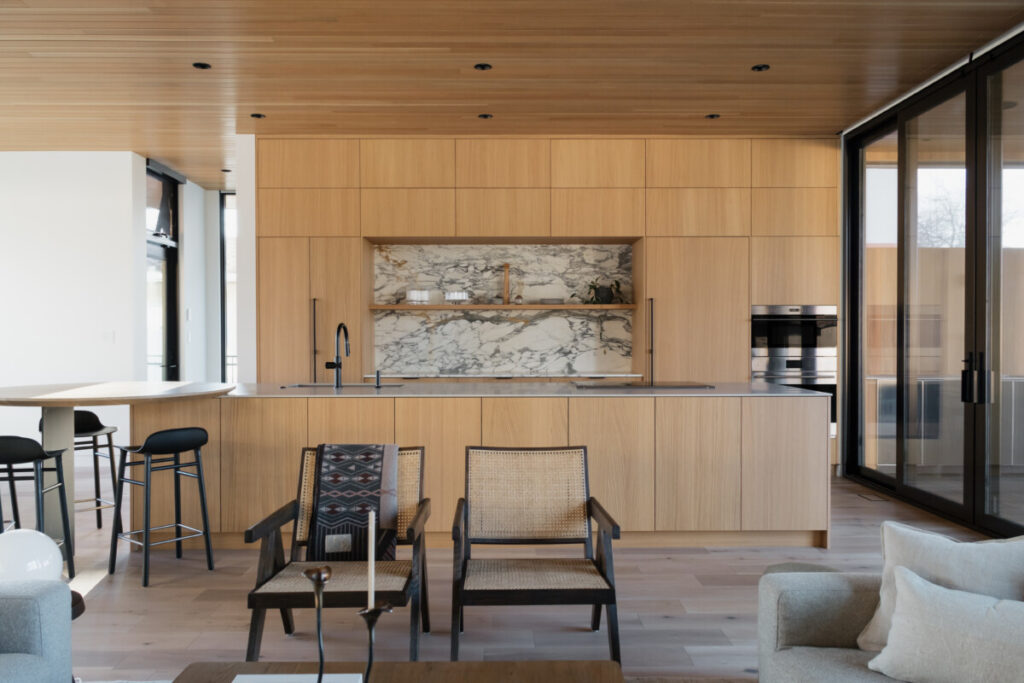
What is Hospitality Design?
Hospitality design is defined as the process of creating and planning the physical and aesthetic environments for businesses that serve guests – such as hotels, resorts, restaurants, lounges, and other service-oriented establishments. It involves designing spaces that are not only functional and comfortable, but also visually appealing. Bringing the principles of hospitality design into the home allows for the creation of spaces that are equally welcoming and luxurious through thoughtful curation.
Now that we understand the goal of a hospitality project, let’s take a closer look at six key elements commonly found in hospitality designs.
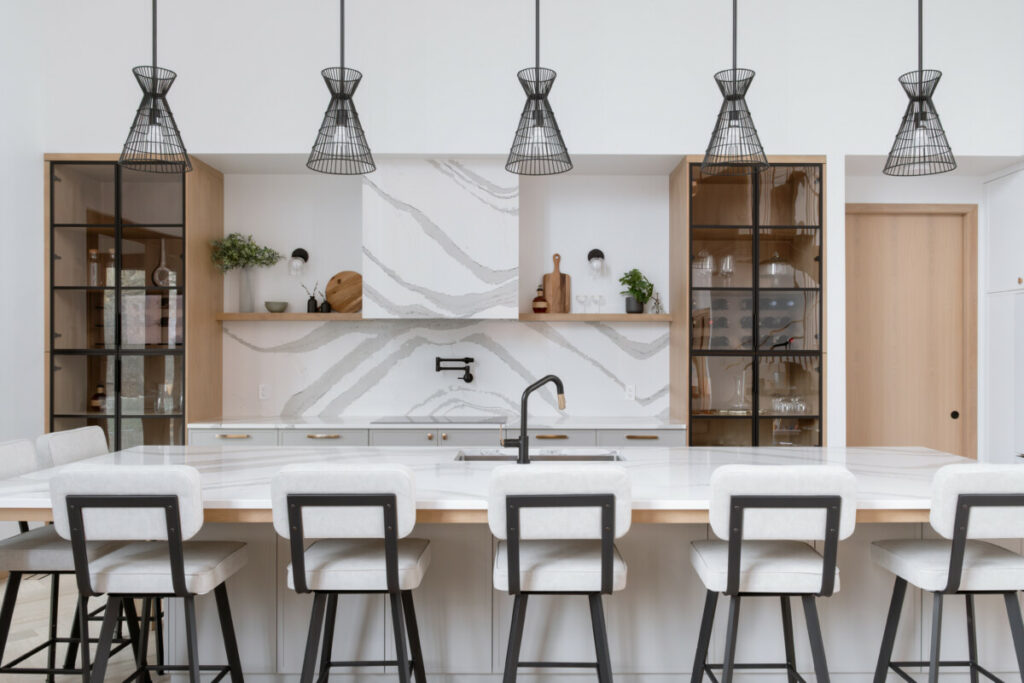
1) First, is the interior design of the space itself. This encompasses the layout, furniture, lighting, color schemes, and overall decor of the space. The goal of the interior design is to create an inviting, functional, and visually cohesive environment that reflects the brand identity of the property and ensures comfort and convenience for those interacting with the space.
2) Second, is the guest experience. Every design decision in these spaces is focused on making the guest feel welcome, relaxed, and engaged. This includes everything from the ease of navigating the space, to providing amenities that support the guest’s needs in order to provide an elevated and curated experience.
3) Next is brand identity. Often, brands will have such a strong identity that you can instantly recognize one of their spaces just by the visual styling. Generally, the design will reflect the personality, culture, and values of the business. For example, a luxury hotel might feature high-end finishes and sophisticated design elements, while a boutique hotel may have a more eclectic or quirky style.
4) Functionality is a must for these spaces. It is essential that hospitality design successfully balance aesthetics with practicality. This includes ensuring proper lighting, acoustics, accessibility, efficient layout – all while planning for the necessary activity zones like storage, restrooms, and workspaces.
5) Next up is sustainability. In recent years, sustainable practices have become a much larger focus in both the hospitality & residential design industry. Designers are prioritizing eco-friendly materials, energy-efficient systems with a focus on both water and electricity conservation and are actively making environmentally conscious design choices from the outset of the project.
6) And finally, as with so many areas of our lives these days, technology integration is becoming a prevalent feature in modern hospitality interiors. These modern hospitality spaces often incorporate advanced technologies for guest convenience, such as smart rooms, automation systems, and in-room entertainment options.
Overall, hospitality design aims to create an environment where guests feel comfortable, safe, and engaged, while also ensuring operational efficiency for the business.
Now you may be wondering, how could this information on hospitality design help me in my home design? Let’s explore ways to integrate these design features in your own home here in Manitoba.
Elements of Luxury Hospitality Interiors and Bringing Them Home
1) Refined Material Selection
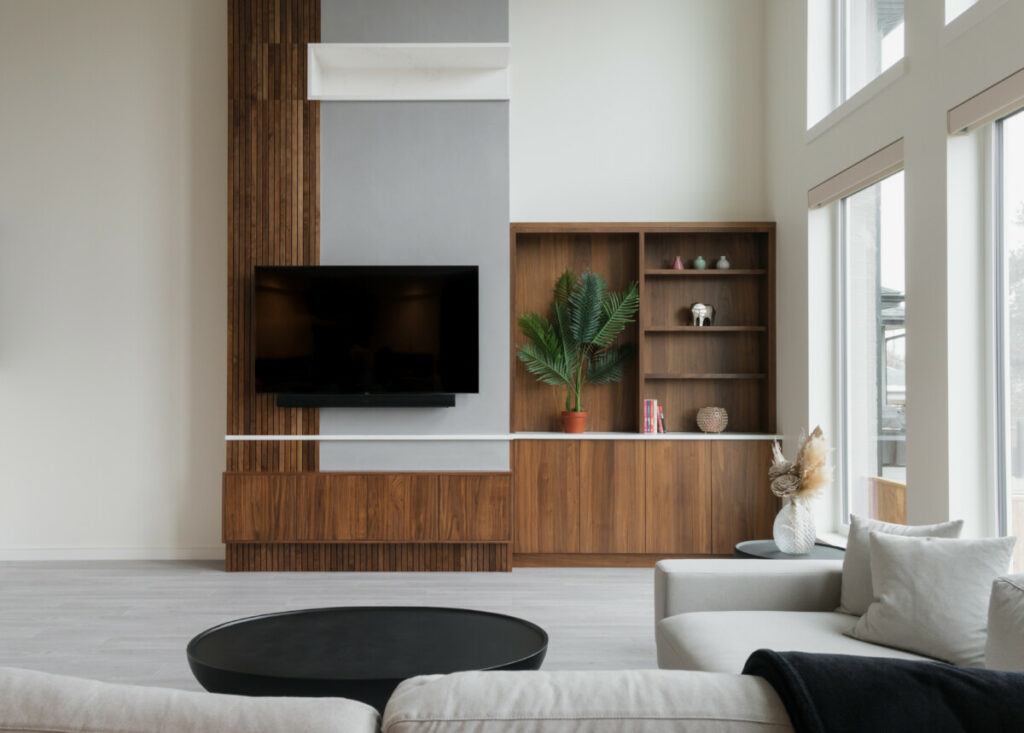
An interior designer typically begins the design process by selecting refined materials that convey elegance and sophistication. In luxury hospitality interior design, every material is carefully chosen to create an atmosphere of refinement. From exquisite marble and premium woods to sumptuous fabrics and gleaming metals, each element is selected with great attention to detail, ensuring a sensory experience that embodies the essence of luxury. Incorporating these refined selections into your kitchen begins with choosing luxurious, timeless materials like rich walnut or high-gloss UV lacquer. Pair them with polished brass or brushed nickel hardware and bold porcelain or quartz countertops and backsplashes to elevate the space. It’s important to consider durability and maintenance when selecting materials for hospitality spaces like the kitchen, therefore materials that are often used in commercial spaces will stand up exceptionally well in a residential space as well. Focusing on high-quality and thoughtful details can go a long way in transforming your kitchen into a sophisticated, luxurious retreat.
2) Iconic Pieces
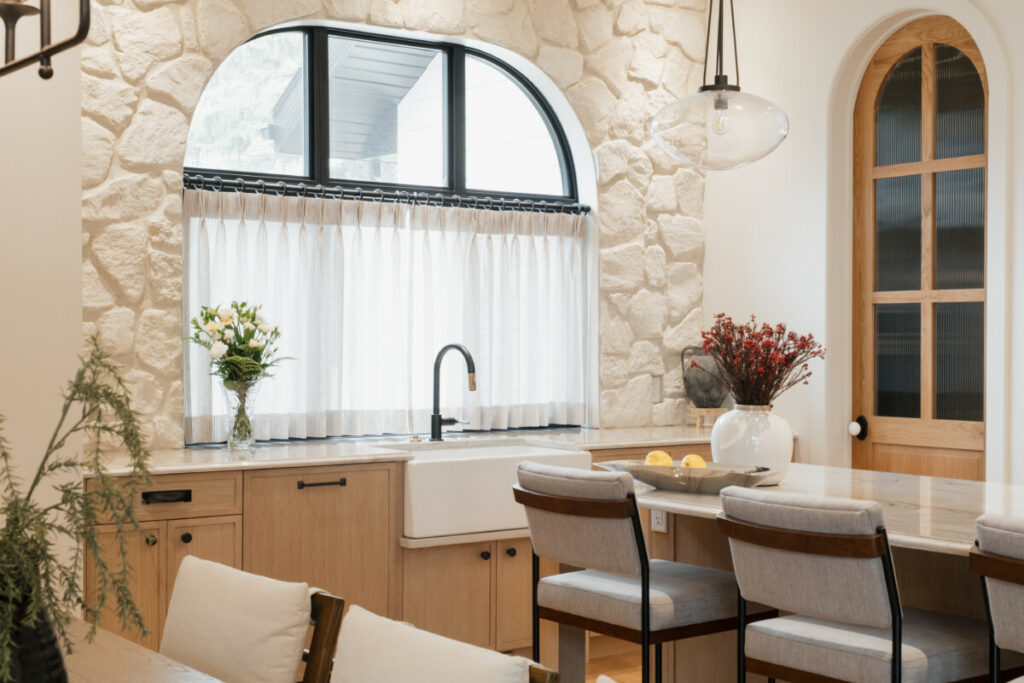
Luxury hospitality interiors often showcase iconic design pieces or custom-made furnishings to infuse a sense of exclusivity. In your home this is best executed by adding personal touches in each space. One of our favorite ways to bring this into kitchen design is by adding a bold pattern countertop or adding extra details in the millwork. For example: custom hood cabinets, custom pulls made out of unique materials, decorative corbels, unique finishes (ex distressing), custom glass/mullions/inserts. These distinctive elements act as statement pieces, enhancing the overall aesthetic and contributing to an atmosphere that is truly unique.
3) Impeccable Craftsmanship
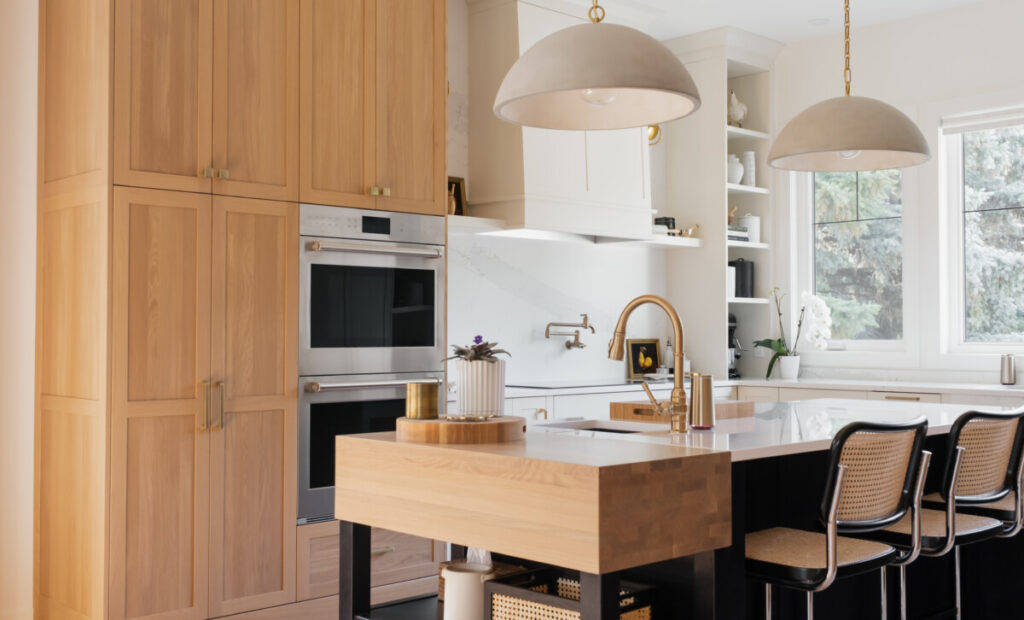
Luxury is closely associated with impeccable craftsmanship. Every corner of a luxury hospitality space is defined by intricate details, flawless finishes, and exceptional artistry, all of which convey a sense of handcrafted excellence. From ornate chandeliers to finely crafted moldings, these features highlight the expertise of skilled artisans and reflect the meticulous attention to detail invested in creating a remarkable guest experience. Corbels, face frames, decorative legs, and furniture base can add this luxurious craftsmanship to any kitchen or cabinetry in your home.
4) Harmonious Color Palette
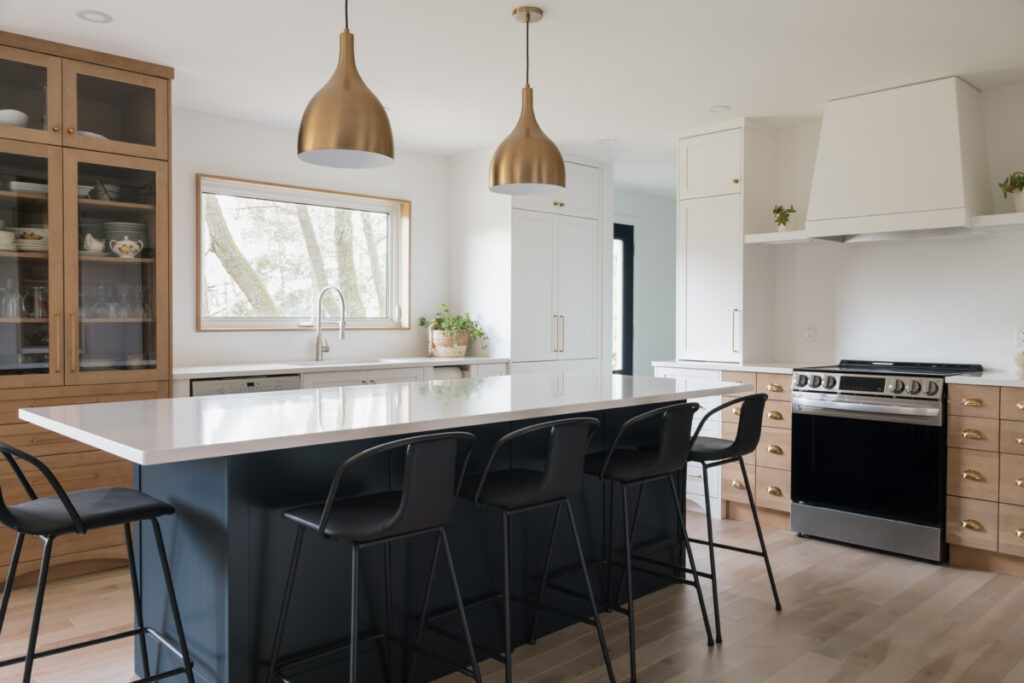
The color palette in a space plays a crucial role in shaping the guest’s experience. In luxury interior design, a thoughtfully curated color scheme flows seamlessly across both public and private areas of a property. Soft neutrals, deep jewel tones, or carefully balanced contrasting hues are often chosen to evoke a sense of luxury. Many hotels and restaurant choose colors that reflect their brand identity; in the home we can translate ‘brand identity’ to personality, or the theme you have for your home. Is it a place for relaxation, a space for fun times, the place where you get energized? Tying the palette in your kitchens to the rest of your house creates an ambiance that is not only visually stunning but also inviting and memorable, enhancing the overall atmosphere of your kitchen.
5) Unforgettable Experiences
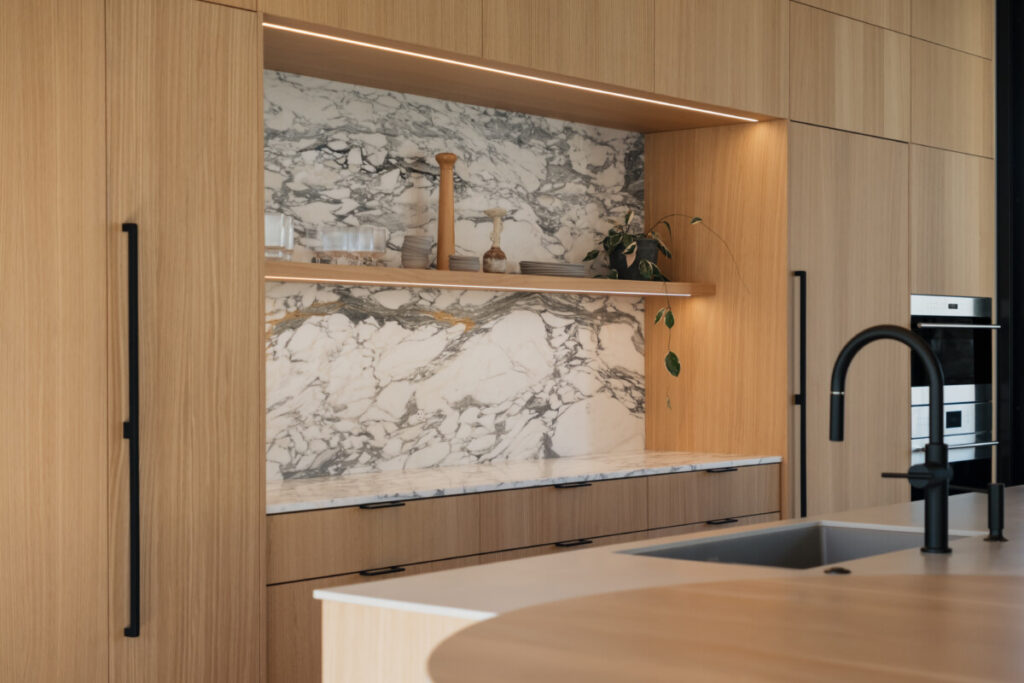
Ultimately, a luxury hospitality space is centered around creating unforgettable experiences. Luxury design transcends mere function and aesthetics, focusing on crafting moments that leave a lasting impression. A great lighting design can often define a luxury experience. Layered lighting can enhance the visual appeal of a space by adding integrated lighting on floating shelves, open cabinets, or cabinets with glass doors. These lighting options in the kitchen will improve functionality by serving different activities and set the mood & ambiance for you and your guests.
Challenges in Implementing Hospitality Design at Home
Incorporating Hospitality Design in your home doesn’t come without challenges and we can’t finish this blog without acknowledging them first.
1) Budget Considerations
First is budget considerations. Chances are we don’t have the budget of these properties to create a space. Balancing luxury with practicality is challenging because these two concepts often represent opposing priorities, and finding the right equilibrium requires thoughtful design, material selection, and understanding of the intended use of a space or product.
Balancing luxury with practicality is difficult because the two priorities often require different approaches. Luxury tends to focus on exclusivity, opulence, and aesthetics, while practicality emphasizes function, durability, and accessibility. To achieve a successful balance, designers and manufacturers need to carefully consider the intended use, materials, and design elements to ensure that a space or product remains both indulgent and usable. When done right, the result is a harmonious and elevated experience that doesn’t sacrifice function for beauty or vice versa.
2) Personalization vs Trend
The other factor is striking a balance between following trends and maintaining personal style. Striking a balance between following trends and maintaining your personal style in interior design can be tricky, but it’s essential for creating a space that feels both contemporary and timeless. By thoughtfully integrating trends into your design while staying true to your unique preferences and needs, you can create a space that’s stylish, functional, and personal. Focus on your core aesthetic, timeless features and incorporating signature details.
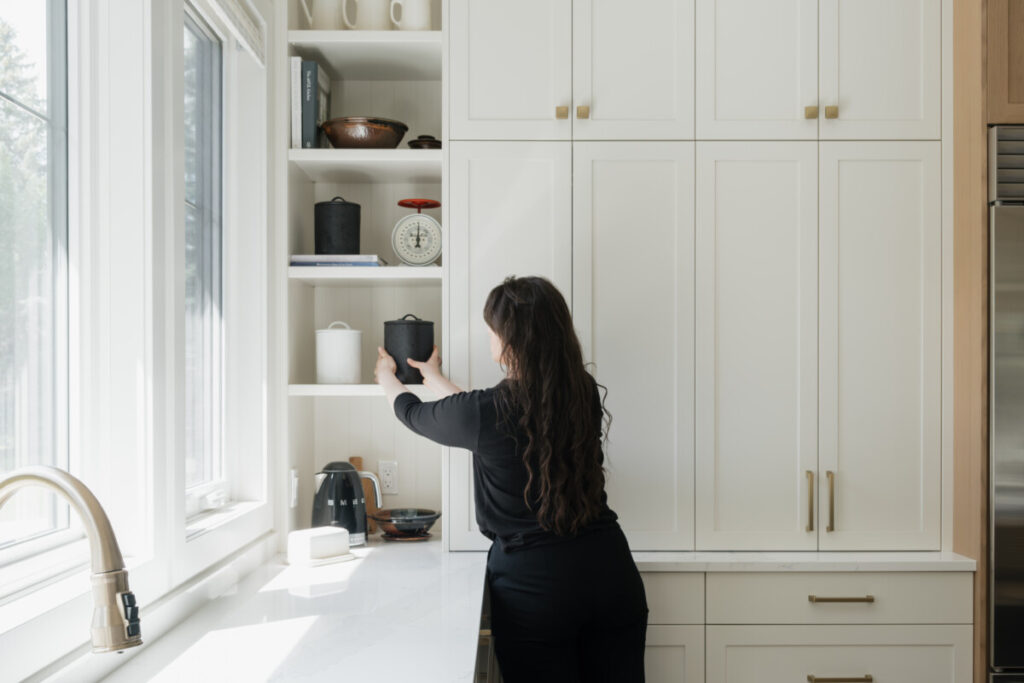
In conclusion, after exploring the concept of hospitality design and how we can draw inspiration from it for our own interiors, I encourage you to stay attentive to the design elements you encounter on your next trip. By doing so, you can bring a touch of hospitality into your own home, creating spaces that feel welcoming and inspiring.
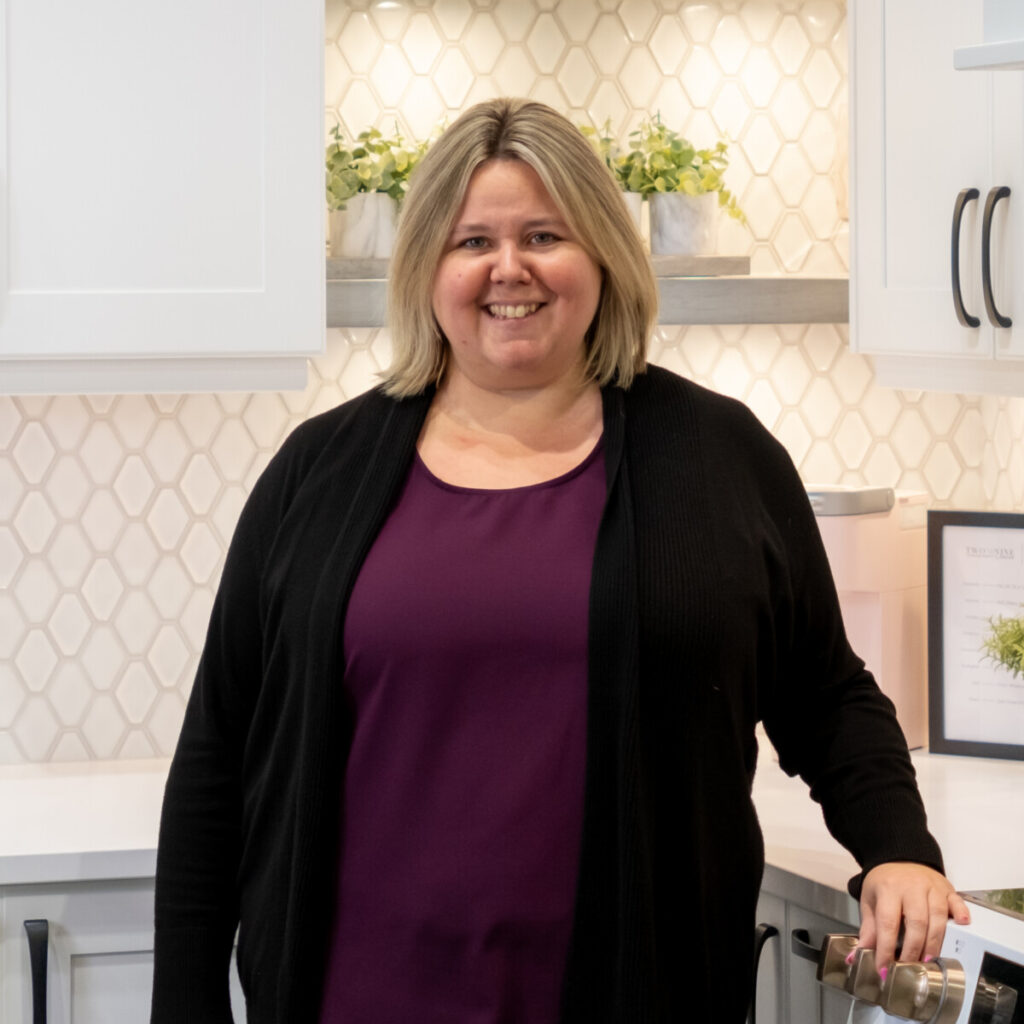
Candace Rudd
Candace has been assisting clients with their cabinetry needs since 2005, and in that time has worked on projects of all sizes in both Manitoba and Ontario. She is proud to hold the Certified Master Kitchen & Bath Designer (CMKBD) designation with the National Kitchen & Bath Association.


